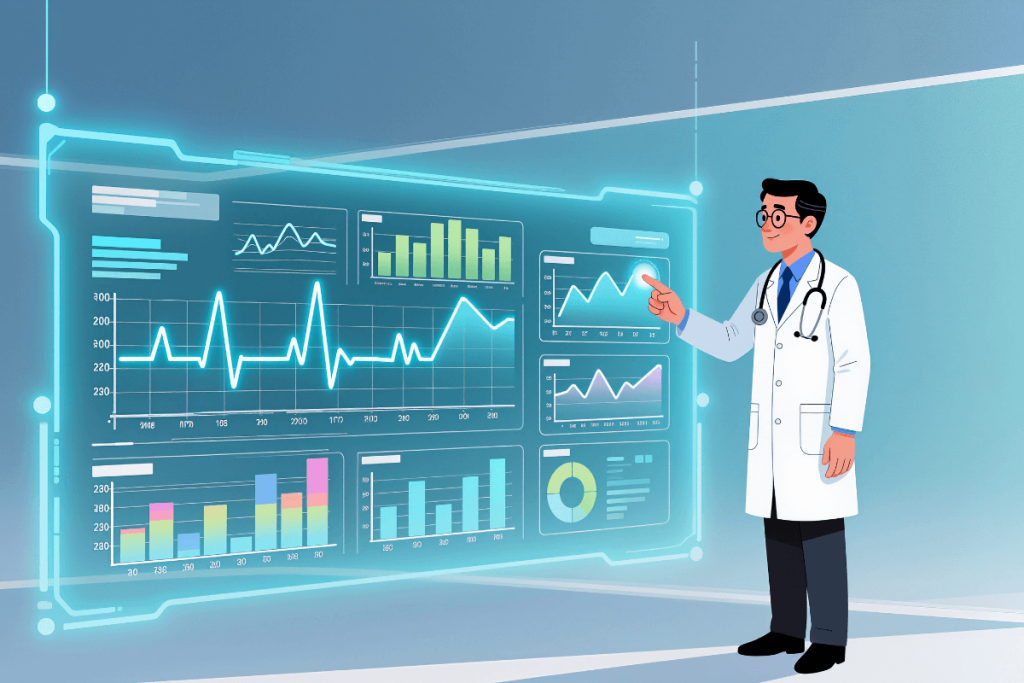
Aging is a complex biological process marked by molecular and cellular levels that influence the overall health and risk of disease. Biological age (BA) measures accumulated biological damage rather than the passage of time and serves as a more accurate indicator of health status than chronological age (CA). Recent advances integrating multi-omics, imaging, and electronic health records (EHR) data have enhanced BA estimation and revealed organ-specific aging patterns.
A recent Nature Medicine study introduces “LifeClock,” which is a full life cycle biological clock built from 24.6 million EHRs using an “EHRFormer” (transformer-based model). By analyzing longitudinal clinical and laboratory data, LifeClock predicts BA across all age groups and identifies age gaps associated with disease risk. Also, it provides a precise and scalable framework for understanding aging as well as improving human lifespan.
The study utilized the data from the China Health Aging Investigation (CHAI), which was a part of the International Consortium of Digital Twins in Medicine. It analyzed 24,633,025 longitudinal clinical visits from 9,680,764 patients across the five major Chinese hospitals such as the first affiliated hospital of Wenzhou medical university (cohort #1, number of participants [n] = 4,623,404, male = 47.05%), the second affiliated hospital of Wenzhou medical university (cohort #2, n = 4,022,651, male = 50.92%), women and children’s center of the PLA general hospital and women and children’s center of the second affiliated hospital of Wenzhou medical university (cohort #3, n = 437,396, male = 55.23%), Dazhou people hospital (cohort #4, n = 597,313, male = 34.91%), and Nanfang hospital, southern medical university, and PLA general hospital, Beijing (cohort #5, n = 86,257, male = 48.28%).
Moreover, EHR data from the UK Biobank (n = 146,087, male = 45.21%) and cohort #5 were used for external validation. All patients’ EHR data were processed using EHRFormer. Regression models’ performance was evaluated using Pearson correlation coefficient (PCC), coefficient of determination (R2), area under the curve (AUC), mean absolute error (MAE) from receiver operating characteristic (ROC) curves, and Kaplan–Meier cumulative incidence analysis.
The BA clock showed a strong accuracy with low MAE, high R², and high PCC, which revealed distinct pediatric (birth to 18 years) and adult (≥18 years) aging patterns with laboratory markers. The pediatric clock was based on high total protein levels, low aspartate aminotransferase (AST) levels, and high creatinine levels, whereas the adult clock emphasized high red cell distribution width, high urea, and low albumin levels. This demonstrated consistent performance and biomarker stability across sexes and cohorts. The performance of the EHRFormer model was confirmed using the external UK Biobank cohort with a low MAE of 4.14.
In Cox regression analysis, patients in cluster 14 showed a higher risk of developing obesity (11.07 times) and pituitary hyperfunction (15.36 times). Cluster 12 was linked to a 10.13-fold higher risk of hernia, cluster 3 to a 4.71-fold higher risk of viral meningitis, and cluster 8 to a 4.95-fold higher risk of precocious puberty. Whereas individuals in cluster 10 had a 3.57-fold increased risk of developmental growth delay. Children (under 18 years) with growth-inhibiting conditions showed BA deceleration, while those with growth-promoting disorders exhibited acceleration. This indicated that the developmental clock accurately reflects the physiological variations in maturation and growth.
When fine-tuned for disease prediction, EHRFormer achieved AUCs up to 0.98 across cardiovascular (coronary artery disease = 0.98, atrial fibrillation = 0.95, ischemic stroke = 0.97, hypertension = 0.95), neurological (Parkinson’s = 0.94, multiple sclerosis = 0.96), and systemic disorders (rheumatoid arthritis = 0.96, osteoporosis = 0.96, diabetes = 0.98), outperforming RNN and XGBoost models. It also effectively predicted 5–10 year disease risks and stratified individuals into high-, medium-, and low-risk groups, demonstrating potential for early health interventions across the human lifespan. This study’s limitations include observational data, cohort bias, and the suppression of traditional clocks.
This study provided strong predictive accuracy for supporting personalized healthcare, early diagnosis of disease, and improved understanding of aging and age-related diseases.
Reference: Wang K, Liu F, Wu W, et al. A full life cycle biological clock based on routine clinical data and its impact in health and diseases. Nat Med. 2025. doi:10.1038/s41591-025-04006-w














